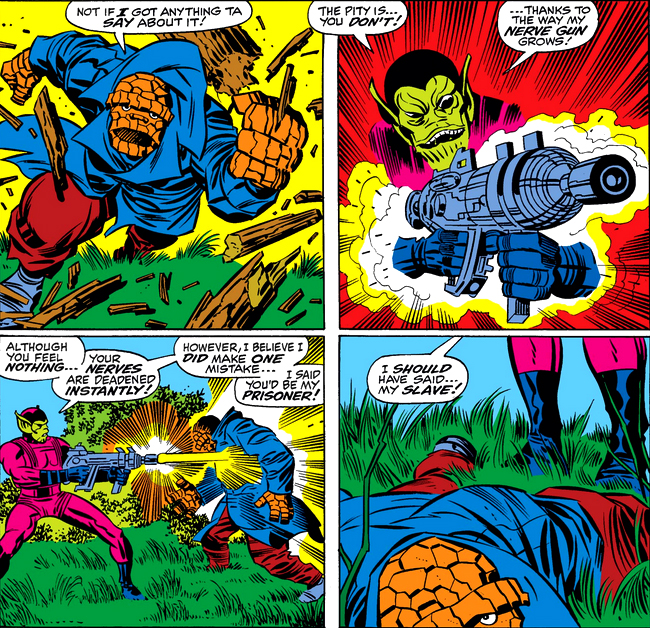The story of Korvac--or, rather, the character we're most familiar with from a ten-month string of Avengers stories in 1978--began following his emergence from a conflict in the 31st century and into our own, where he stumbled upon a source of power that would pave the way for a greater conflict to come.
As we've learned, "Michael," as he refers to himself, had now set out to make himself the universe's benefactor and the savior of all who live by freeing all beings from the chaotic cruelty and injustice of life throughout the universe, while bringing all existence under his own "sane and benevolent rule"--words which for any reader of comics ring familiar as those spoken by many would-be oppressors who felt similarly entitled.
Like other sagas in Marvel's titles which have slowly unfolded over stretches of time (the story of "They" being one such example), this plot winding its way through the Avengers book managed to stay relevant even through shifts in the book's creative talent, as well as the turmoil which can often be found in the team's adventures--sandwiched as it was between their desperate battle with Count Nefaria and their showdown with the deadly Ultron, where the they learned that another threat was now stalking them.
More disappearances occurred both before and after the Avengers (joined by Ms. Marvel) went on to deal with the menace of Tyrak--yet unknown to them, one of the Guardians of the Galaxy, travelling from the future to head off a suspected attempt on the life of one of their members, Vance Astro, had already managed to sense the true nature of their enemy and decided to confront him. It would be a meeting which would cost Starhawk his life.
Starhawk was then sent on his way, oblivious to what had just occurred and no longer a threat to Michael. As we've also seen, Michael had been joined by Carina Walters, a fashion model he coerced to come with him but who in reality is the daughter of the Collector--sent to spy on Michael, but who had instead fallen in love with him.
In dealing with Starhawk, Michael had, in his own words, drawn first blood in the war to come--but as we backtrack and assemble the pieces of this conflict taking shape, how will even the Avengers come to know of this threat before it's too late?


























